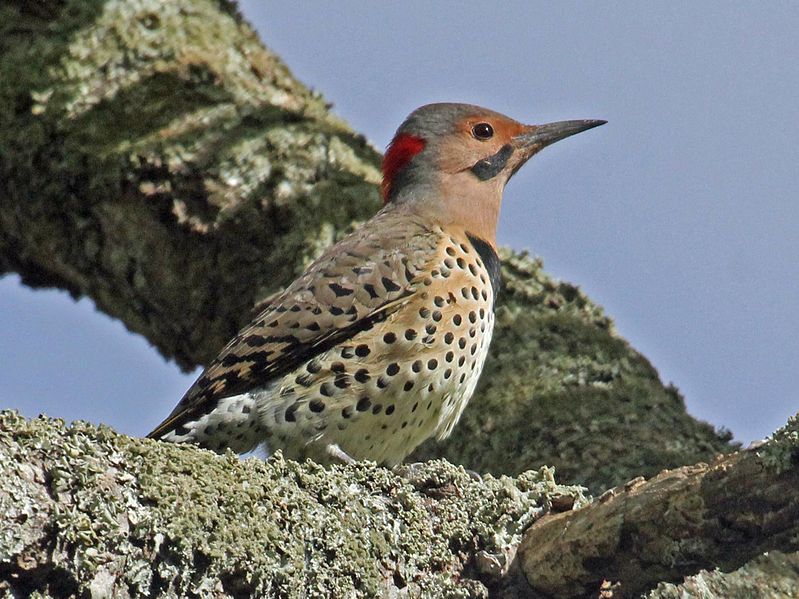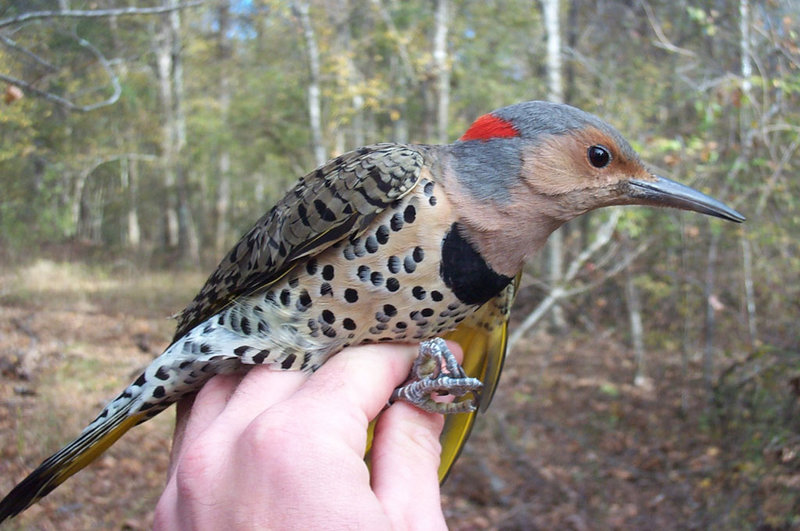northern flickerColaptes auratus
Identification:
This woodpecker is close in size to the Mourning Dove. In the East, it’s a brownish-tan bird with prominent crescent shaped or round black spots and bars. It has a prominent black “bib,” and males have a black “moustache,” and red nape. Its long, downward curved bill is well adapted to scrounging for insects. A prominent white patch on the rump is visible when the bird is in flight. Eastern individuals are “yellow-shafted,” with yellow wing shafts. Behavior: The Northern Flicker actually spends a lot of time foraging on the ground for grubs, larvae, and ants. It excavates a cavity nest usually in a dead tree. Its escalating, then fading “cakcakcakcak” sound reverberates throughout the woods. The Northern Flicker also drums quite loudly. Its flight is markedly undulating. What brings it to the SBG? Food, cover, maybe nesting sites. The Northern Flicker is adaptable but it tends to be found in open wooded sites. It needs dead trees for nesting sites, so they may be limited at SBG, but otherwise the habitat probably provides opportunities for finding insects. When can I see it? Spring through fall. The eastern populations migrate southward for the winter months. |


